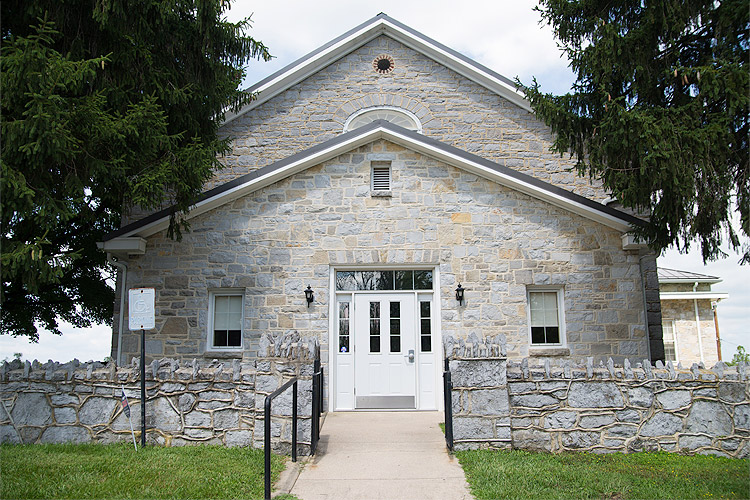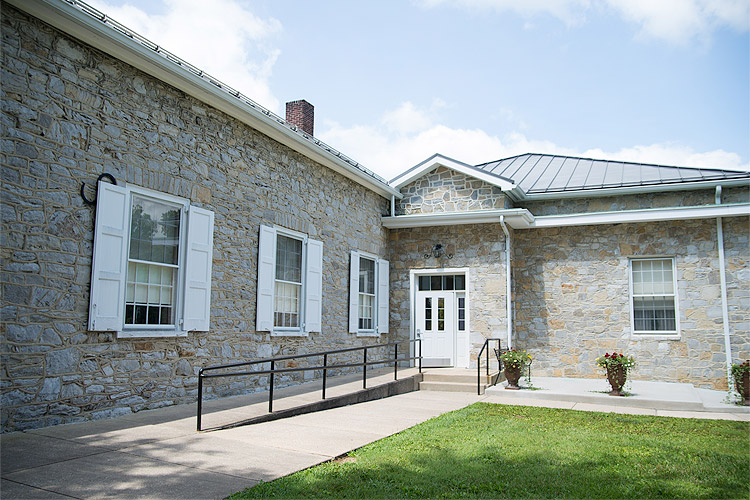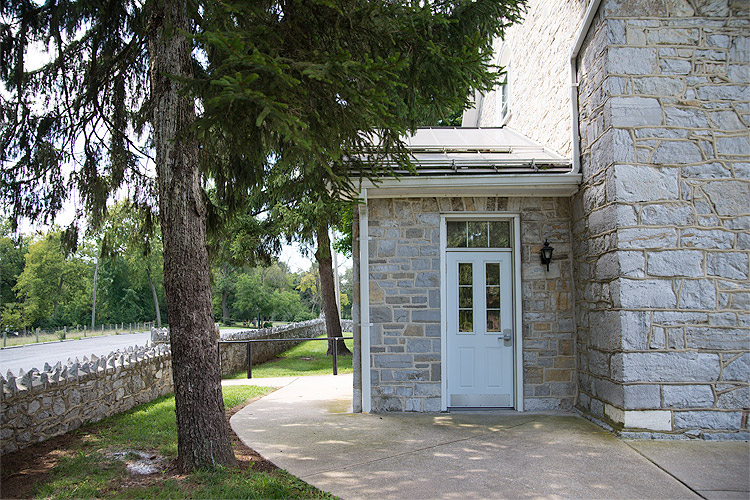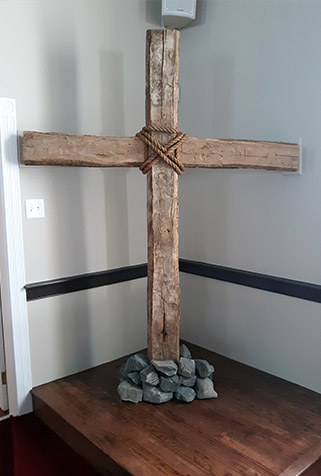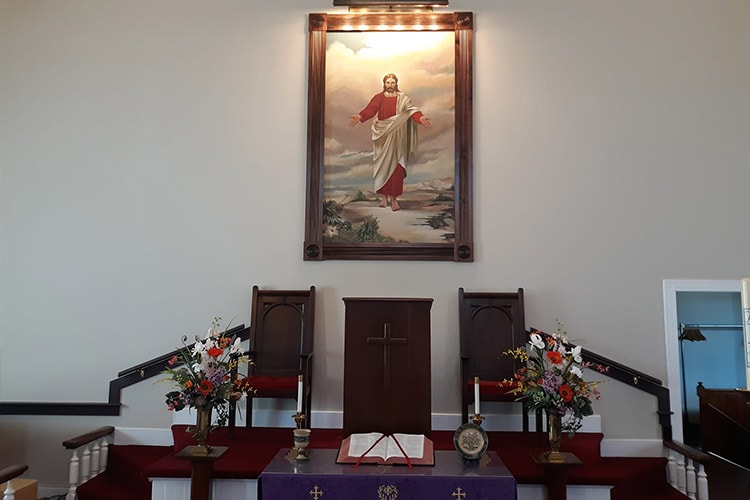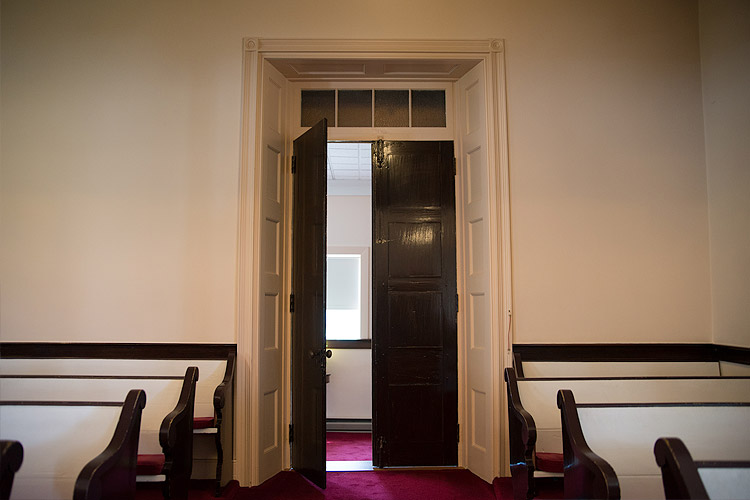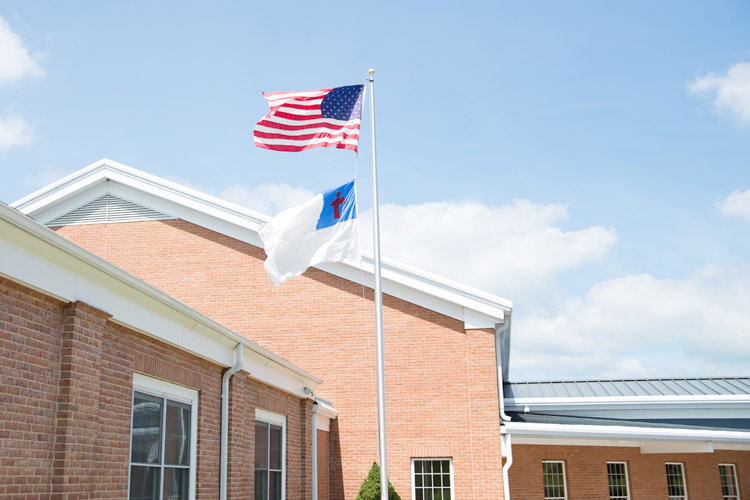- OUR CHURCH HISTORY -
A Complete History of Salem Reformed Church
The history of Salem Reformed Church dates all the way back to the Protestant Reformation in 16th Century Europe. Martin Luther nailed his 95 theses of protest against the Catholic church on the doors of a church in Whittenberg, Germany on October 31, 1517. This act of insurrection began a reformation to showcase and correct the corruption of Catholic Church leaders' stances contradicting Scripture.
While German immigrants had begun settling in the New World in the mid 1600s the first Reformed minister known to arrive, Samuel Guldin, came in 1710. By this time some 30,000 German Reformed people were living in the New World. A Memorial published in the 1700s explains “Some of them fled from the severe persecution to which they had been exposed at home on account of their being Protestants, others from the oppression of civil tyranny and attracted by the pleasant hope of liberty under the milder influence of the British government, others were drawn by the solicitations of their countrymen who had settled there before them, but far the greatest part by the prospect they had of relieving themselves under the deep poverty and providing better for themselves and their families.”
Rev. Guldin occasionally preached, but never attempted to organize congregations. In 1725, John Philip Boehm, a schoolmaster in the German Reformed Church was asked to become the minister of their congregations by people living in towns north of Philadelphia. He agreed and at their first communion in 1725, 101 communed in either Skippach, Falkner Swamp, or White Marsh. The Reformed congregations adopted a Church constitution in 1725.
Laymen led services, but after considering pleas for ordained clergy to administer the sacraments and rites of the Church, in 1746 the Reformed Church of Holland and Reformed Church of Germany commissioned Michael Schlatter from St. Gall, Switzerland as a traveling missionary to the American colonies. After arriving in Boston on August 1, 1746, he continued his work moving south and in 1747 he organized churches in the Conococheague Valley, calling them “The Coetus” (coming together). He was the first missionary or “traveling pastor” in this part of the country. In the spring of 1747 he formed what are still the two oldest congregations in this county: what became known as St. Paul’s Reformed Church first situated along the Conococheague Creek and later, what we know today as Salem Reformed Church was formally organized near Cearfoss, where we’ve gathered ever since. After moving to this area from the Maiden Creek Township in Berks County, Pennsylvania, Peter Deyshere (sometimes spelled Dysher) is credited with being the instrumental layman God used to form this congregation. He, his wife and children settled between Cearfoss and Hager’s Fancy, and set aside 50 acres for the new congregation.
Soon, a hexagonal shaped log sanctuary was built. Church buildings of hexagonal and octagonal shapes were common in the areas of Holland and Germany as well as American colonies in those days. The six-sided building had cat-walks and rifle slits to aid in protection from Indians. The building was not only used for worship, but also served as a lookout and fort. The Deyshere family was frequently harassed by Indians and one account even tells of Mrs. Deyshere spending many a night hiding up in a sycamore tree. Tribes in the area in those times included Massawomeck, Shawnee, Susquehannock, and Tuscarora. The church sexton, Ebrocht, taught school in German, and many of the early members attended school there. Early records of the congregation are lost, probably in a fire, but “Records of Salem Church 1774-1793” belonging to the Maryland Historical Society in Baltimore can still be found online. Detailed information on Ministers who served this church before 1770 seems to not exist, but it is reasonable to assume the ministers who preached and baptized at St. Paul’s in Clear Spring did the same here, usually living in or around the city of Frederick and traveling.
At its start, this new congregation was known by several names: Deyshere, German Evangelical Reformed, Troxel (or Troxell), Salem, and New Salem. By 1770, the congregation was of substantial size and Salem, St. Paul’s, and the newly formed Zion Reformed in what was by then called Elizabethtown united in a petition to the Coetus of Pennsylvania for a settled pastor. The Rev. Jacob Weymer (sometimes “Weimer”), a native of Germany, was appointed. In his 1771 report, Rev. Weymer reported 38 members at Troxel’s (Salem) and 45 at Zion. For the charge that year he recorded 30 baptisms and 30 confirmations. The pastor’s salary was 60 pounds ($300) per year. From 1771 to 1783 Rev. Weymer baptized 242 children at Salem. In this time the Church kept detailed records of receipts and disbursements. In 1773 the congregation paid 11 pounds ($55) to Johannes Flenner for the pastor’s home. That same year there’s another line item that reads “And there must be paid Fockler rent for three years for a stove 19 shillings” ($4.56). On January 8, 1774, the congregation bought a stove from a member, Captain Jonathan Hager, now known as the founder of Hagerstown, for three pounds ($15). Jonathan Hager’s brother, David Hager is buried in our cemetery. The church treasurer reported having received on church dues 11 ¼ bushels of corn valued at one pound one and one half pence ($5.03). By 1793 the charge had a home for the minister from an entry in the account “Paid to the Manse five pounds three shilling” ($15.72).
In 1806 the log church was enlarged and later destroyed by fire in 1821. Soon after, a large portion of the original fifty acres was sold for $2,500 to help fund the building of a new stone sanctuary which we still worship in today. The cornerstone was laid in 1822 and the congregation officially claimed the name “Salem,” which is German for “shalom” meaning “peace,” as their own. Heat in this new building was supplied by two potbelly stoves, situated along the walls in about the middle of the sanctuary, and a white picket fence was built around the churchyard and stayed there until it was dismantled in 1935 when the current stone fence was first built.
From 1770 to 1884 Salem Church was served by Pastors who lived in Hagerstown and served a number of churches in the area. Rev. Jonathan Hauser preached in all Reformed Churches in what is now Washington County, as well as some in what is now Frederick County. By 1820, with the Rev. James R. Reilly as pastor, the charge consisted of Salem, Zion Reformed, Christ’s Reformed, Funkstown (Christ Reformed), St. Paul’s, Williamsport, and Bart’s (or Bard’s and later Beard’s).
The Synod of the Reformed Church formed the Mercersburg Classis in 1840, detaching Pennsylvania congregations at Hagerstown, Salem, Cavetown, Leitersburg, and Clear Spring and added them to this Mercersburg Classis. In 1843, under the Rev. Moses Kieffer as pastor of the Hagerstown charge, Salem was again part of the Maryland Classis. In 1845 Salem was invited to become part of a Clear Spring charge but chose to not part ways with Zion, and Salem was again asked to part with Zion to join a new Mercersburg charge, but declined. From then until 1959, Salem remained in charges with first Zion Reformed, and later Christ’s Reformed, both in Hagerstown.
The congregation was served by Rev. John H. Wagner from 1861 to 1864 during the Civil War. When Confederate forces were retreating after the Battle of Gettysburg a severe skirmish took place near the intersection of present day Broadfording Road and Greencastle Pike. A field hospital was set up in the woodland around Salem to care for the wounded, and it is safe to conclude the building itself was also used as a hospital.
By the start of the 20th Century, Salem had a membership of sixty people and by her 200th anniversary in 1947, membership had grown to 162 with a Sunday School enrollment of 130. Anniversary services were held for one week straight with nightly worship gatherings. On this anniversary, after the congregation had been using a small pump organ for years, an M.P. Moller pipe organ, which at the time was the largest manufacturer of pipe organs in the world, was donated to the congregation in memory of Mrs. Hannah McLaughlin, as the first known organist of the church. A dedication service was held October 5, 1947 featuring Isabel Dungan Ferris, Associate Professor of Organ and Music Theory at Wilson College. Though designed as an economic “cabinet organ,” the instrument served Salem for almost 75 years, until December of 2020. This 200th anniversary also led to the creation of a building fund and in September of 1950, ground was broken for the project to build a stone educational building with plumbing to provide for a kitchen and bathroom. Horses and plows were used to dig the footers and basement. On June 24, 1951 the cornerstone was laid and the building was first used March 30, 1952 during the Ministry of Dr. Frederick Eyster. Dedication services were held nightly the week of April 20, 1952. The building was debt free in three years and featured a stage and partitioned classroom spaces upstairs on the main level, as well as a Pastor’s office, Secretary’s office, kitchen, bathroom, and youth room with shuffleboard on the floor in the lower level.
A parsonage was purchased in Maugansville in 1957 as part of the charge and in 1959, after being in a charge with Zion Reformed from its founding in 1770 to 1884, and Christ’s Reformed from 1884-1959, Salem became self-supporting and hired her first full-time pastor, Rev. Joseph H. Clem. By this time, Salem held a membership of 313 with an enrollment of 340 in Sunday School. Today, historians consider the 1950s and 1960s the heyday of America’s Sunday morning church attendance and church membership. After Rev. Clem left in 1964, Rev. Raymond L. Morris, Jr. was installed December 13, 1964 and served until December of 1965. Rev. J. Clark Hayes was called in 1966 to serve as full time pastor until his retirement in 1998. In 1966, a new parsonage was built on Sunrise Avenue in Maugansville to better suit the needs of Rev. and Mrs. Hayes and their family.
In 1962, the brick Sunday School building was built to provide space for a growing children’s ministry, which is still used for that purpose today. Renovations have taken place in many parts of the building over the years, including complete renovations of the sanctuary in 1947, 1968, 1984, and 2022. In 1984, the stone Sunday School building was renovated, which included removing the youth room and dedicating a “Hoffman Fellowship Hall”. In 1996, after the American with Disabilities Act was passed, an elevator between levels of the stone Sunday School building and handicap accessible restrooms near the sanctuary were added. In 2017 another renovation of the Hoffman Hall took place, along with the brick Sunday School building, with new flooring, painting, and later, new lighting and HVAC being added. The main level of the stone Sunday School building (the Upper Room) underwent renovations beginning in 2022 to add a dedicated “History Hall” and expand the classroom area by removing the stage.
After serving Salem for 32 years, Rev. Hayes retired in 1998. A search process that took over two years ended in 2000 when Rev. Stephen Wagoner was called to ministry at Salem. In 2002, the process of fundraising and building a multipurpose building known as our Family Life Center began. Through time and hardwork, fundraising took place and volunteers came forward to help in the completion of the project that included a gymnasium, large stage, large kitchen, additional handicap accessible restrooms, and a youth center. After a generous estate gift along with fundraising, the building was dedicated debt free November 20, 2004. Salem Reformed Church commissioned her first “missionaries” from the congregation in the summer of 2005 to Elizabeth City, North Carolina to a weeklong mission trip with Group Mission Trips. This summer trip to cities in the eastern United States has occurred almost every year since, only disrupted by a pandemic, with Salem noted within Group Mission Trips for having a multi-generational team each year.
Back in 1957 the Evangelical and Reformed Church and the Congregational Christian Church denominations had merged to create the United Church of Christ (UCC). With a few eyebrow raising positions from the wider UCC leadership over the decades, in 2005 it became clear that the UCC was shifting towards the abandonment of the Five Solas that define our faith: Grace alone, Faith alone, Christ alone, Scripture alone, to the Glory of God alone. The denomination was now open to allowing and accepting cultural definitions of who God is, what marriage is, what salvation is, and was moving away from being rooted firmly in the Word of God. On April 23, 2006, with two representatives of the denomination present, Salem Reformed Church voted to withdraw her membership from the United Church of Christ by a vote of 156 to two. As a non-denominational, independent, autonomous church, on September 16, 2006, the congregation voted to become affiliated with the Evangelical Association of Reformed and Congregational Christian Churches. Also in the spring of 2006, a land committee was formed to research purchasing adjacent land. A congregational vote on November 19, 2006 gave permission to proceed with the purchase of 13.6 acres of land; a portion of the original 50 acres owned by the congregation.
After 18 years of service, in March of 2018 Pastor Steve shared with the Consistory and then the congregation his intent to retire in May of that year. He preached his final sermon as Pastor of Salem Reformed Church May 20, 2018, Pentecost Sunday. After a search process, Pastor Eric D. Cox, Jr. preached a trial sermon December 30, 2018 at Salem, followed by a vote of the congregation to call him to ministry. After accepting the call, Pastor Eric’s first act as Pastor of Salem a few months later was preaching at the Ash Wednesday service, March 6, 2019. An installation service took place Saturday, June 1, 2019.
The year 2020 would, by unwelcome surprise, bring unprecedented challenges to the leadership of Salem Reformed Church and churches across the country with the novel coronavirus. By March of 2020, the coronavirus was declared a pandemic across the globe, and was first documented in the United States on the west coast after becoming rampant in China. Moving into mid-March, state and federal governments were recommending “social-distancing” between individuals in different households, so on Sunday, March 18, 2020 worship took place in the Family Life Center with chairs spaced throughout the gym to allow for social distancing. What had been an average weekly attendance of 166 in the months prior was 83 this Sunday. Later that week, the Governor of Maryland mandated no gatherings over 10 people may take place. Pastor Eric began conducting Sunday worship services from his home, streamed online for the congregation to view and worship. For close to two months, the Consistory met weekly via phone and video to discuss updates coming from the government and navigate the barriers of communication that now existed within the Church. After over a month of not gathering for worship at all, a drive-in Easter service was held in the parking lot of Salem, with Pastor Eric and two members leading music situated on a flat-bed trailer, while members stayed in their vehicles and brought their own communion elements.
The Sunday after Easter 2020 Pastor Eric began live-streaming Sunday services from the sanctuary with live music and a vocal lead. In late May, the Governor announced that he would be ending the 10 person limit for houses of worship, and on Sunday May 31, Salem gathered in person for worship, again in the Family Life Center, with 62 in attendance. With discussions on “returning to normal” becoming a regular part of meetings, Pastor Eric and the Consistory made the decision to move worship back into our sanctuary July 12, 2020 with 78 in attendance. In the weeks that followed, church leadership gave heed to and prayerfully considered the ever-changing mandates and regulations from government regarding masking, social distancing, how we should administer communion, etc. and Sunday School for all ages reconvened September 13, 2020. Salem was back into the full swing of ministry a year later, step by step, with the last part of returning to normal being passing communion plates pew to pew in the beginning of 2022.
Since then, while live-streaming certainly doesn’t replace the scriptural call to assemble together, live-streaming of worship has continued at Salem and many other churches around the country and proves to reach and minister to those who may never hear the gospel preached without it. Salem experienced a growth in actual new members joining the church in 2020 and 2021, and by summer of 2022 attendance had almost rebounded, with an average of 152 for Sunday morning worship.
Pastor Eric preached and administered the sacraments and rites of the Church with a license since the time of his hiring. After prayer and consideration Pastor Eric, along with leadership of Salem Reformed Church felt he was being called to be ordained. In what is believed to be a first, Salem Reformed Church ordained the Rev. Eric Cox to full time ministry on July 3, 2022 in a service led by Rev. Jim Barnes of St. Louis, Missouri, National Minister of the Evangelical Association.
Since its founding, this congregation has witnessed the birth of our nation and government, the rise and fall of many other nations and governments, times of peace and war, including a war that temporarily divided our nation in two, the assaination of four sitting presidents, the fall of the horse and carriage and rise of the automobile, the shift from an agrarian to an industrial to an increasingly technological economy, the arrival of man on the moon, and many other things that are ever changing, decaying, and renewing in our world. One thing that has remained constant is this congregation worshiping and serving the one true God: Father, Son, and Holy Spirit, and preaching His Truth, and only His Truth. Salem Reformed Church celebrates a rich and fulfilling history with a hopeful future by no works or deeds of men on earth, but only by redemption and salvation from Jesus Christ.
Sources include:
- The Historical Handbook of the Reformed Church, 1902, James I. Good.
- A History of Washington County, Maryland 1906, Thomas J. C. Williams.
- “Two Hundredth Anniversary, Salem Evangelical and Reformed Church,” 1947.
- “Dedication Services, Salem Evangelical and Reformed Church,” 1952.
- “Ceremonies and Services Commemorating the Inauguration of the First Full Time Minister of Salem Evangelical and Reformed Church,” 1959.
- “The 225th Anniversary of Salem Reformed Church United Church of Christ,” 1972.
- “Sesqui-Bicentennial 250th Anniversary of Salem Reformed Church United Church of Christ,” 1997.
- Washington County Maryland Church Records of the 18th Century 1768-1800, 2007, F. Edward Wright.
- Salem Reformed Church Consistory Minutes from 1994 to 2022.
The sanctuary was built/dedicated in 1822, it has the original pews, altar, altar chairs, as well as chandelier.
The chandelier has been hanging in the sanctuary since it was built in 1822. Originally lit by oil, it's now electrified.

